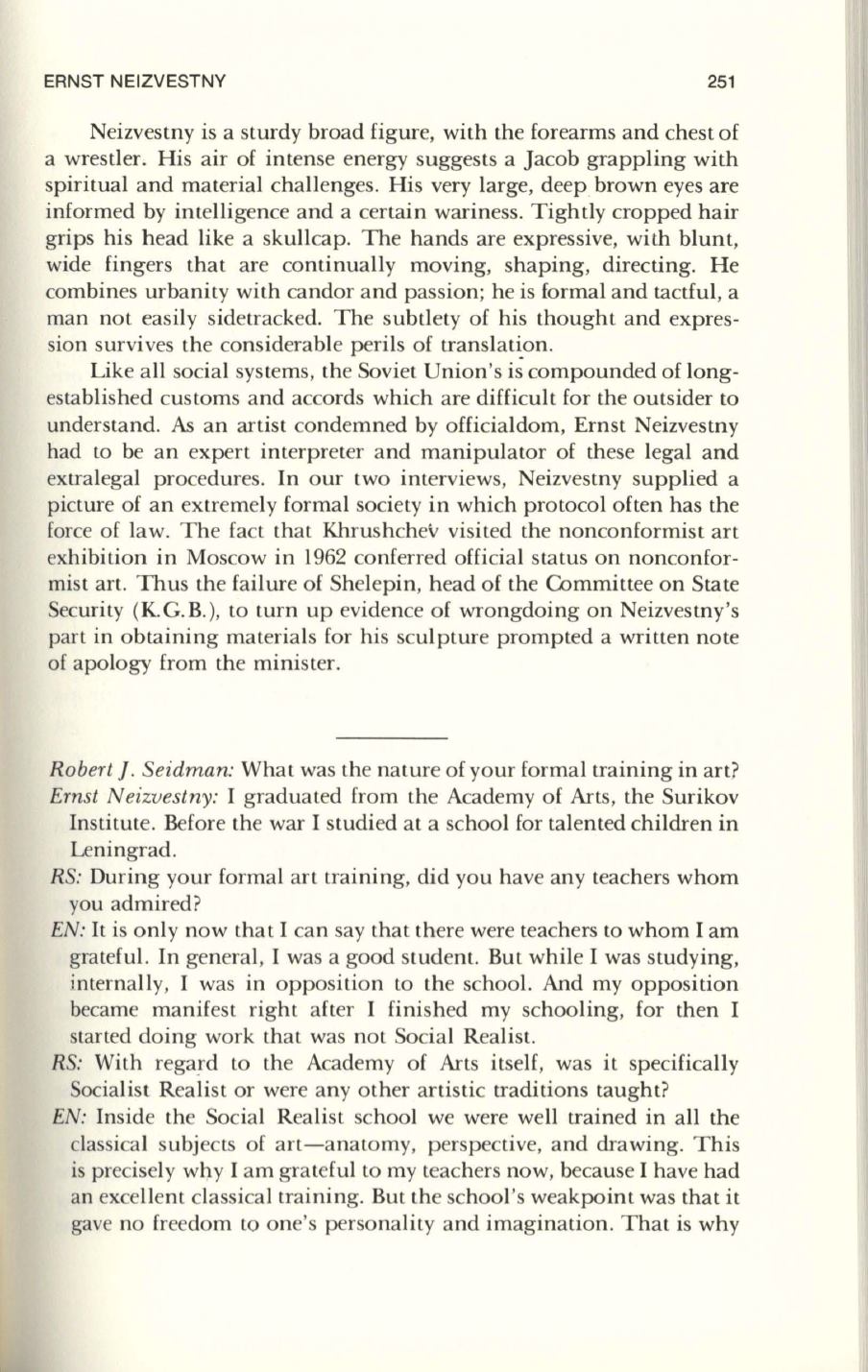
ERNST NEIZVESTNY
251
Neizvestny is a sturdy broad figure, with the forearms and chest of
a wrestler. His air of intense energy suggests a Jacob grappling with
spiritual and material challenges. His very large, deep brown eyes are
informed by intelligence and a certain wariness. Tightly cropped hair
grips his head like a skullcap. The hands are expressive, with blunt,
wide fingers that are continually moving, shaping, directing. He
combines urbanity with candor and passion; he is formal and tactful, a
man not easily sidetracked. The subtlety of his thought and expres–
sion survi ves the considerable perils of translation.
Like all social systems, the Soviet Union's
i~
compounded of long–
established customs and accords which are difficult for the outsider
to
understand.
As
an artist condemned by officialdom, Ernst Neizvestny
had to be an expert interpreter and manipulator of these legal and
extralegal procedures. In our two interviews, Neizvestny supplied a
picture of an extremely formal society in which protocol often has the
force of law. The fact that Khrushchev visited the nonconformist art
exhibition in Moscow in 1962 conferred official status on nonconfor–
mist art. Thus the failure of Shelepin, head of the Committee on State
Security (KG.B.), to turn up evidence of wrongdoing on Neizvestny's
part in obtaining materials for his sculpture prompted a written note
of apology from the minister.
Robert
].
Seidman:
What was the nature of your formal training in art?
Ernst Neizvestny:
I graduated from the Academy of Arts, the Surikov
Institute. Before the war I studied at a school for talented children in
Leningrad.
RS:
During your formal art training, did you have any teachers whom
you admired?
EN:
It
is only now that I can say that there were teachers to whom I am
grateful. In general, I was a good student. But while I was studying,
internally, I was in opposition to the school. And my opposition
became manifest right after I finished my schooling, for then I
started doing work that was not Social Realist.
RS:
With rega!d to the Academy of Arts itself, was it specifically
Socialist Realist or were any other artistic traditions taught?
EN:
Inside the Social Realist school we were well trained in all the
classical subjects of art-anatomy, perspective, and drawing. This
is precisely wi:ty I am grateful to my teachers now, because I have had
an excellent classical training. But the school's weakpoint was that it
gave no freedom to one's personality and imagination. That is why


